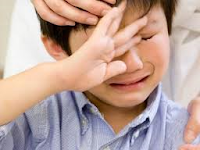You may not realise that I work in several capacities, apart
from just being a homeopath. I have
worked in a primary school for a couple of years now, working with reception
children and infants. I am also a dog
trainer, teaching classes for the last 12 years – I teach 5 classes a week and
specialise in working with fearful, anxious and reactive dogs.
During my time in school I find it really interesting to see
what things children are scared or anxious about and why they hold these fears.
These range from the usual – fear of trying new things, anxious about insects,
clowns or puppets, anxiety about performing in front of you (but will in front
of their peers). Some are more extreme –
fear of candles being lit (in case everything catches fire – so only a man can
light candles), snow (as its dangerous in case you fall), children who are
selectively mute (can be a control issue but can be driven by massive fear),
hysterical fear of spiders, heights (not a huge height, but up 1 step off the
ground), water (even a paddling pool) and buttons (so no polo shirts can be
worn, only a t-shirt).
Some of these are more straightforward to understand as more
rational fears – anxious about performing in front of others, or trying new
things in case you get it wrong and feel bad (driven often by a lack of
self-confidence) – this is often changed over time as they see other children
get things wrong and yet its safe and as they gradually grow in confidence.
However some are really extreme to watch – a normally happy
child becomes almost hysterical because a tiny fly appears. A fear of wasps is more understandable,
especially if you have been stung before – but a tiny fly?

Some children are shy and so loath to try new things or
speak their ideas, others are highly competitive and so get really anxious in
case they don’t win, and others are just nervy “highly strung” kids who worry
about seemingly everything! But how much
of this is learnt by our children? How much responsibility do we have to identify
and address these fears?
I think (as a parent myself) that we have to step back and
look at our own anxieties and see if we are transferring them to our
children. For example, a small boy in my
school is scared of wearing buttons, but so is his dad… How has this child
become afraid of buttons? It’s not the most common of things to feel anxious
about and does cause problems for him (and his mum) as he gets really anxious
if she tries to put a normal shirt on him. So some fears are modelled and
children learn them as the norm – like being hysterical around tiny flying
insects, or not going up 1 step on a ladder in case you fall and hurt yourself.
Another thing I see is children – often the very academic –
listening to adult conversation without really understanding (as they lack the
maturity) and then becoming anxious. For
example one small boy was paranoid about getting hurt and would become
frantically anxious if he tripped over, becoming hysterical if he grazed
himself enough to draw blood. Through
conversations with his mum it turned out she was back and forth to the GP and
spent lots of time discussing illnesses with her family so he had become
paranoid about it. His mum had no idea
that her anxieties about health had been transferred so dramatically to her
son.
So, observe your children closely and look at whether they are
learning anxieties from you, or from someone else close to them… Often it means that we have to put our own
fear down very deep inside and model to the children that its safe – never easy
but with the added bonus that our own fears get smaller.

The effect of your anxiety on your dog
And how do your anxieties affect your dog? Believe it or
not, your emotions and body language speak far louder to your dog than your
actions. At dog training we see lots of dogs who become far more anxious because
of their owners – when we take the dog, it becomes far calmer.
One dog we work with is very anxious around other dogs –
this shows itself as lunging and barking madly.
The handler gets tense when another dog is anywhere in sight – her hands
clench on the lead, or she winds it around her hand – the dog immediately throws
itself around and barks – even if it cannot see the dog. This dog is triggered to be reactive by her
handler. Conversely if we take the dog
and leave her lead very lose and ignore her initial barking, although she bobs
up and down and barks, its far less intense and she calms much more quickly.
Often we see people who are anxious about their small dogs –
they carry them around, or don’t let them go near any bigger dog. Small dogs are frequently anxious – in part
as they haven’t been allowed enough socialisation but also because their owners
react negatively (and sometimes hysterically) if another larger dog tries to
play!
We teach handlers to take a deep breath in and then slowly
out, focussing on relaxing themselves and deliberately not looking at the thing
which they feel anxious about. You need
to move slowly and calmly away – whistling or singing to yourself works really
well. It sounds a bit crazy – but trust
me – it really works!
.png)
No comments:
Post a Comment